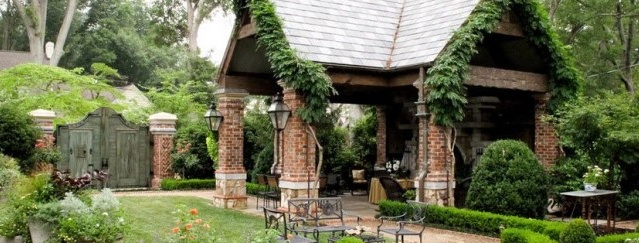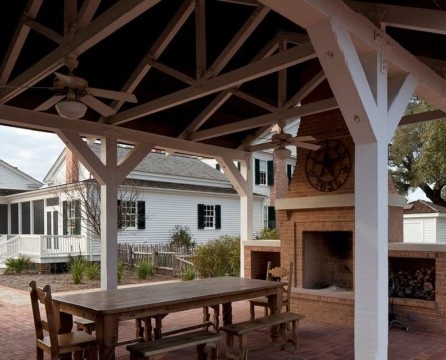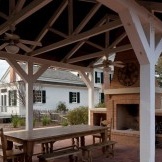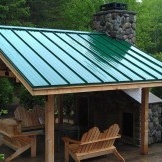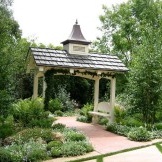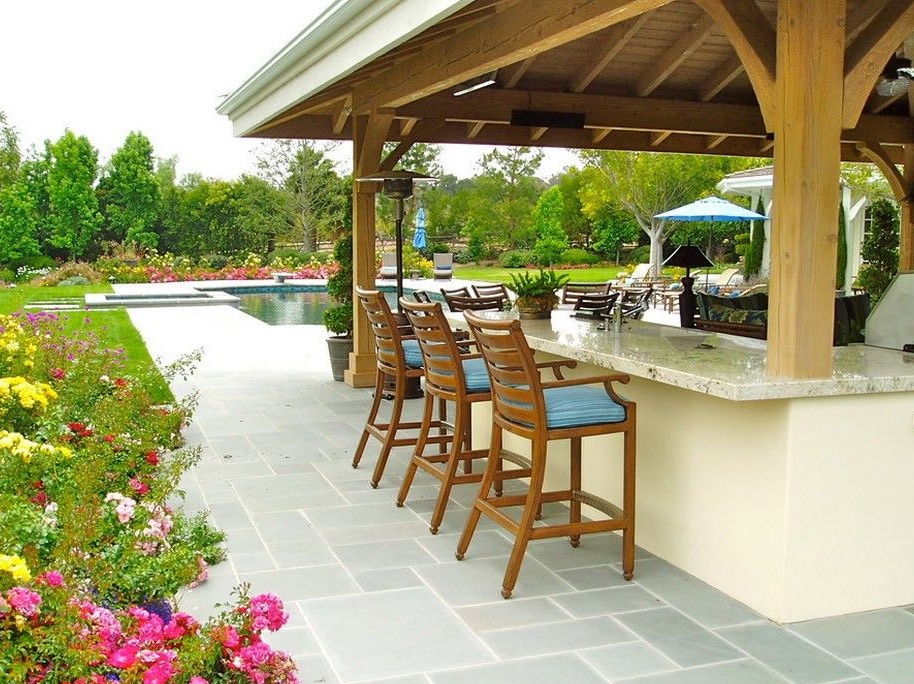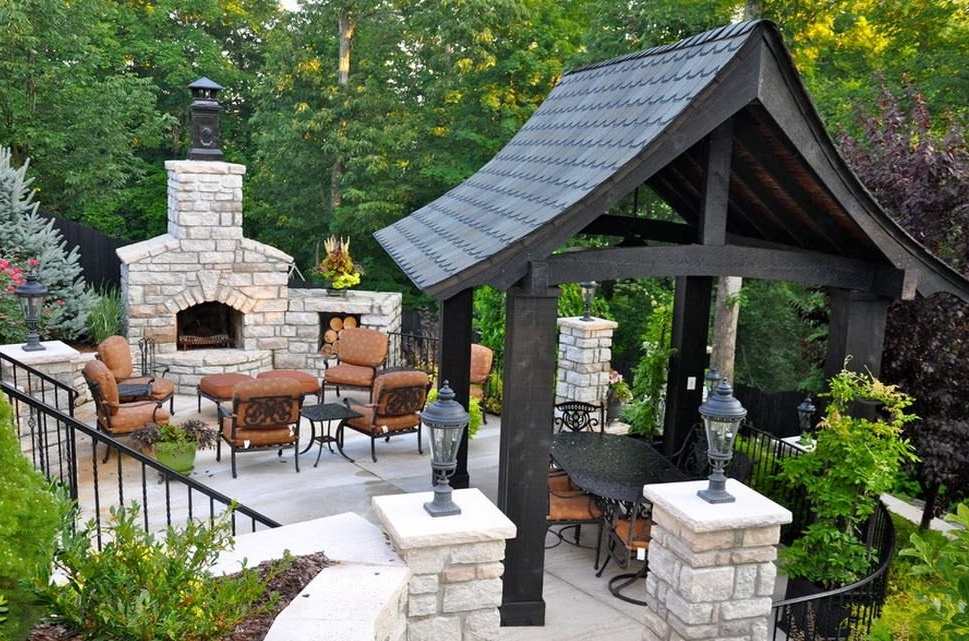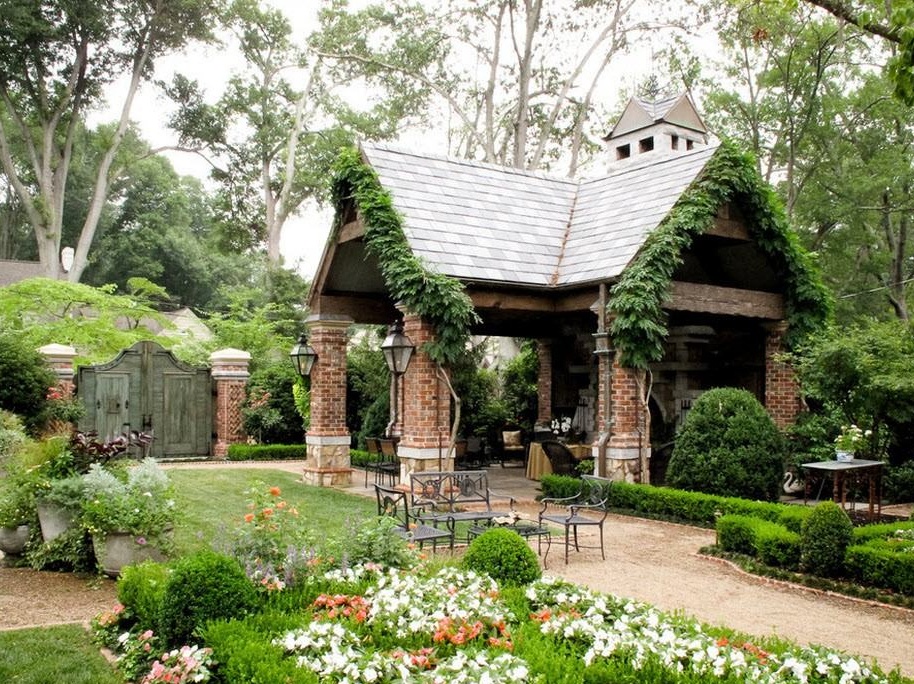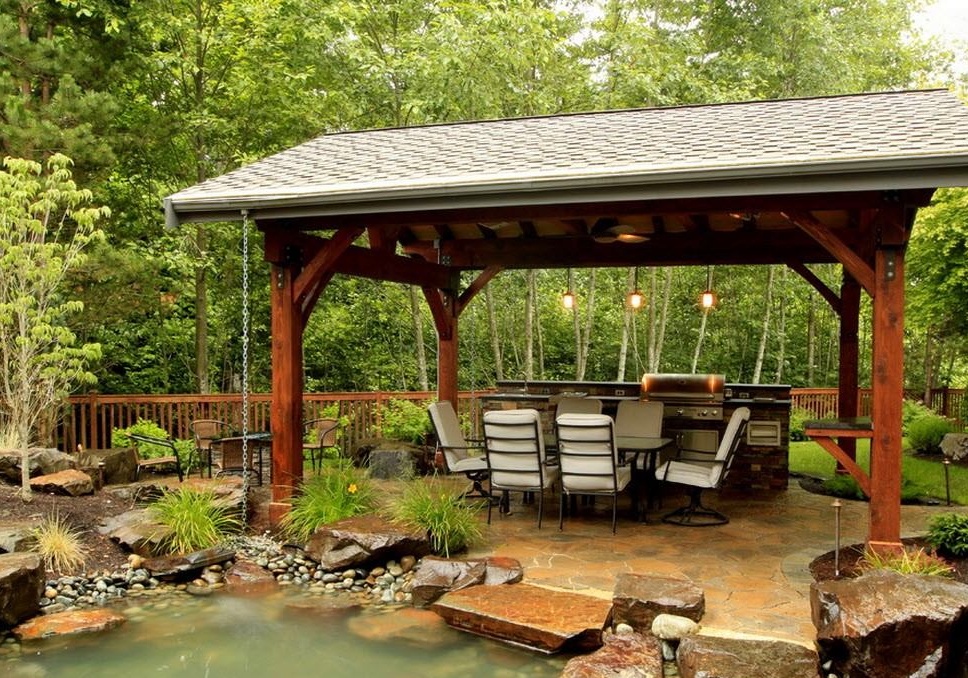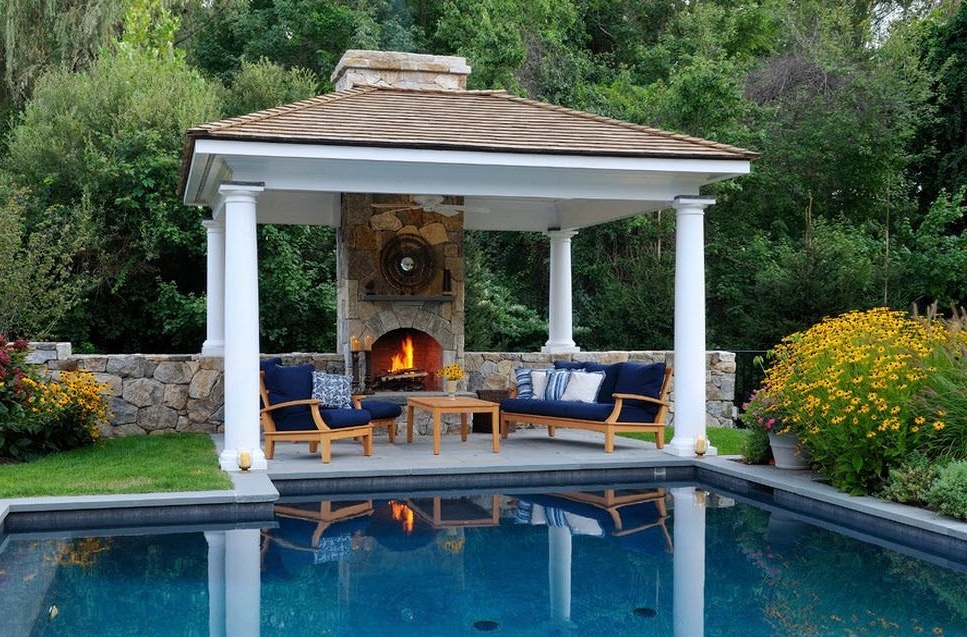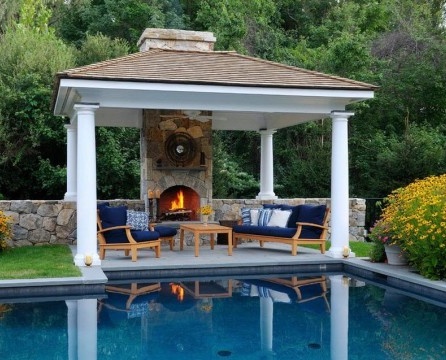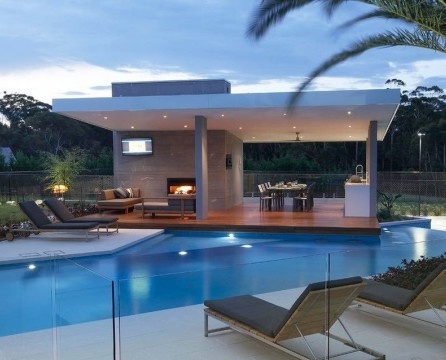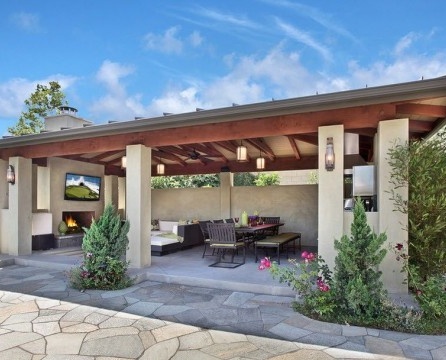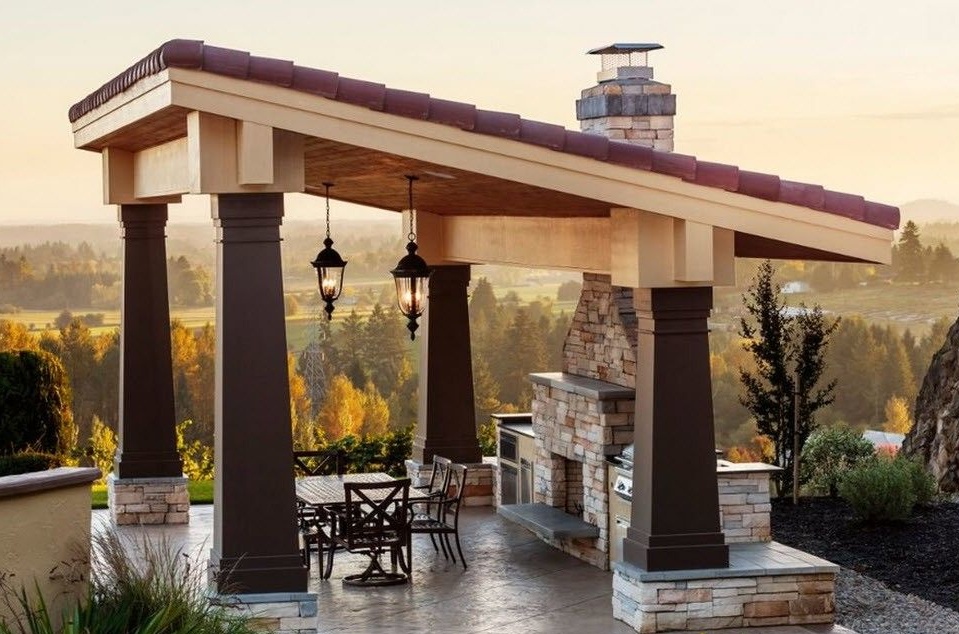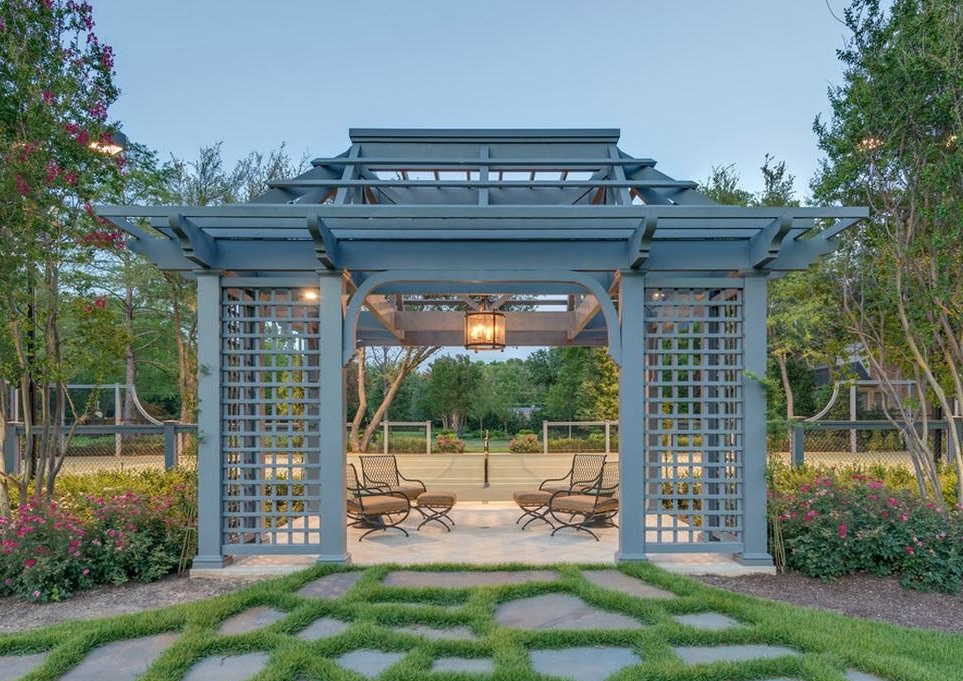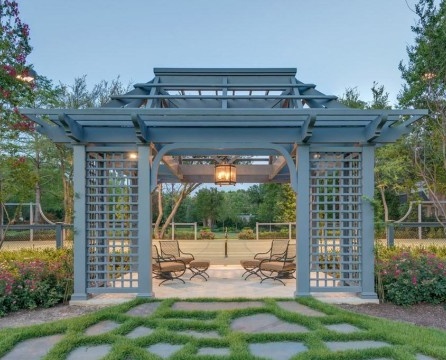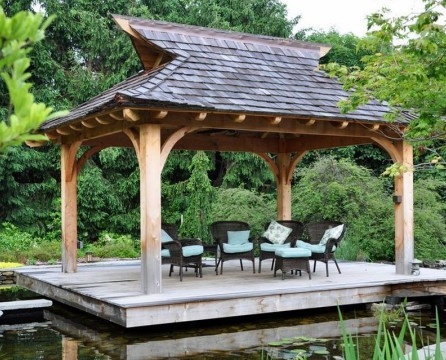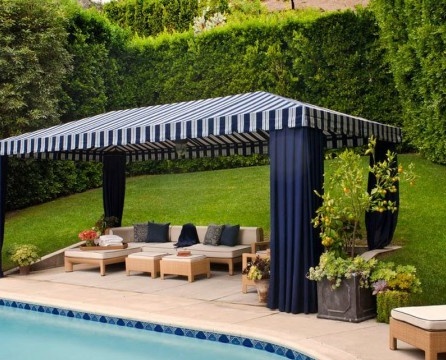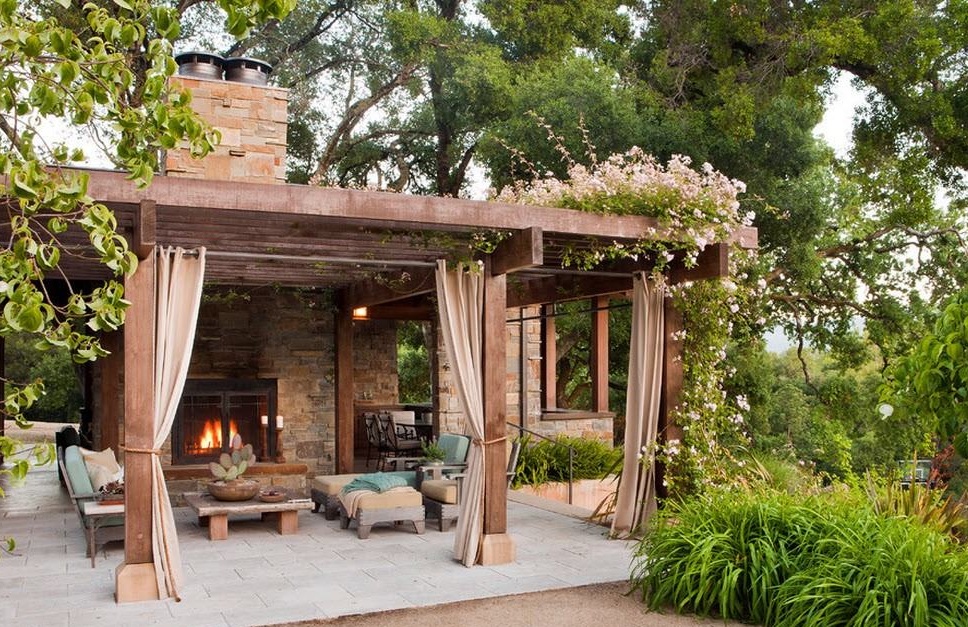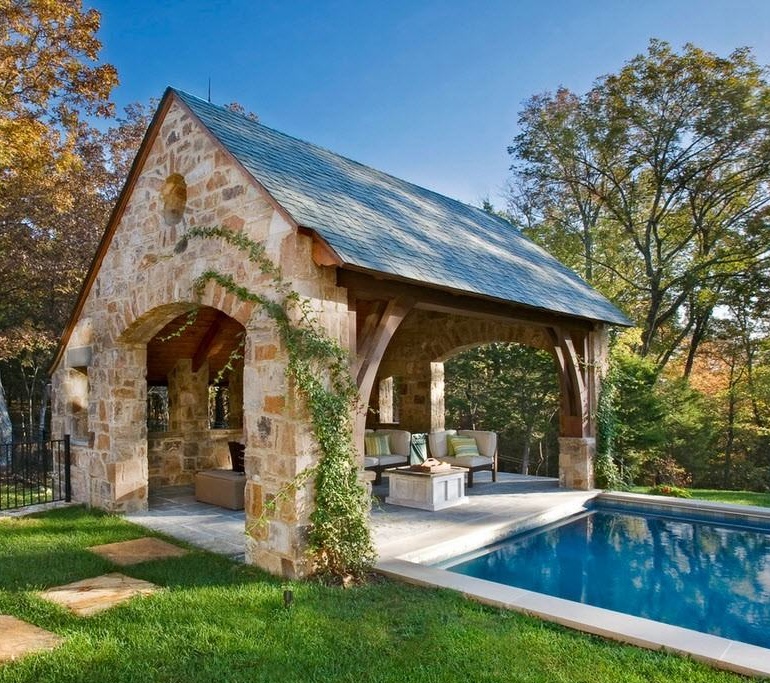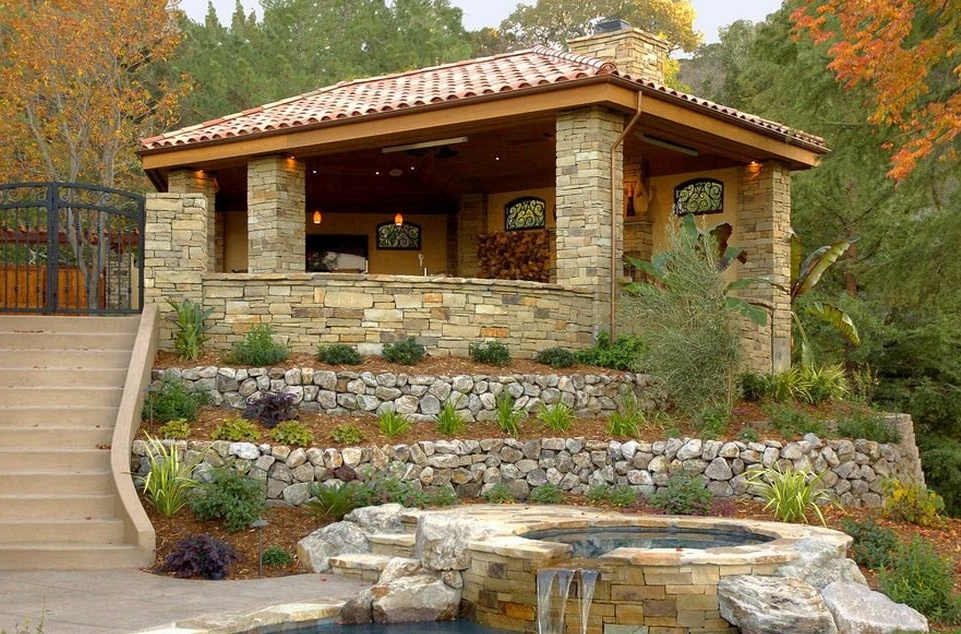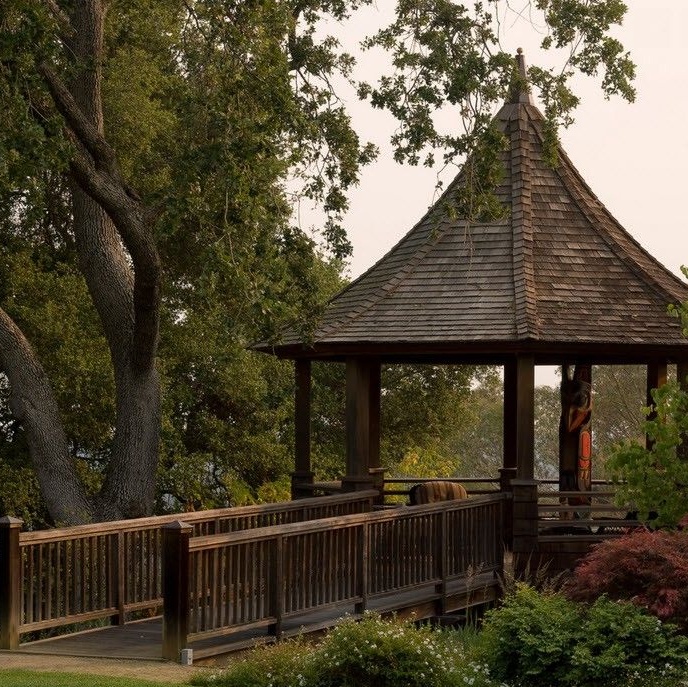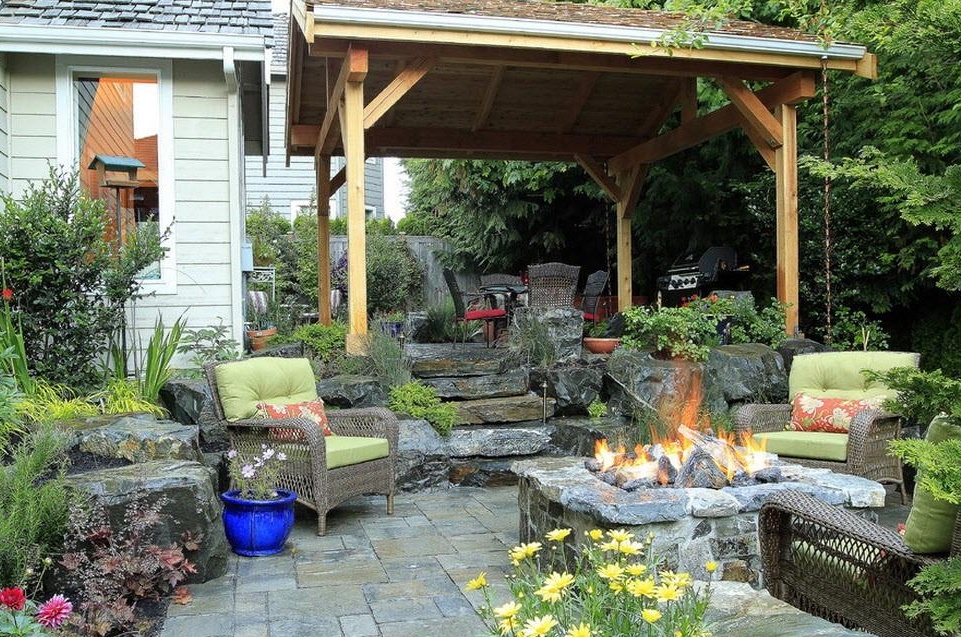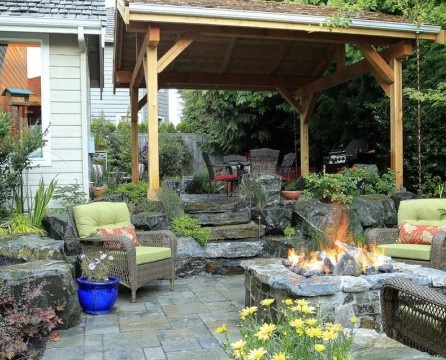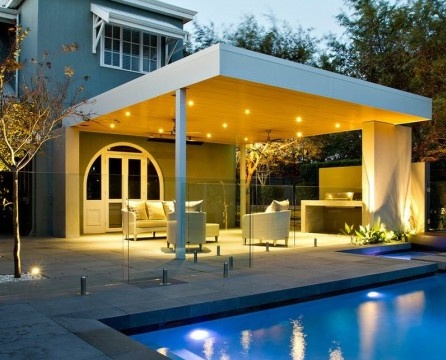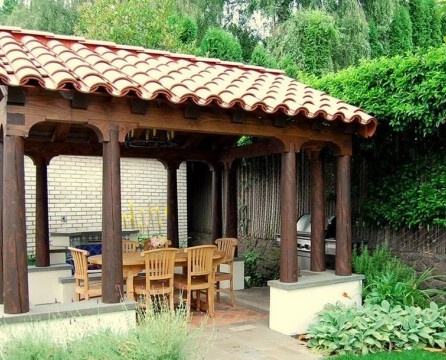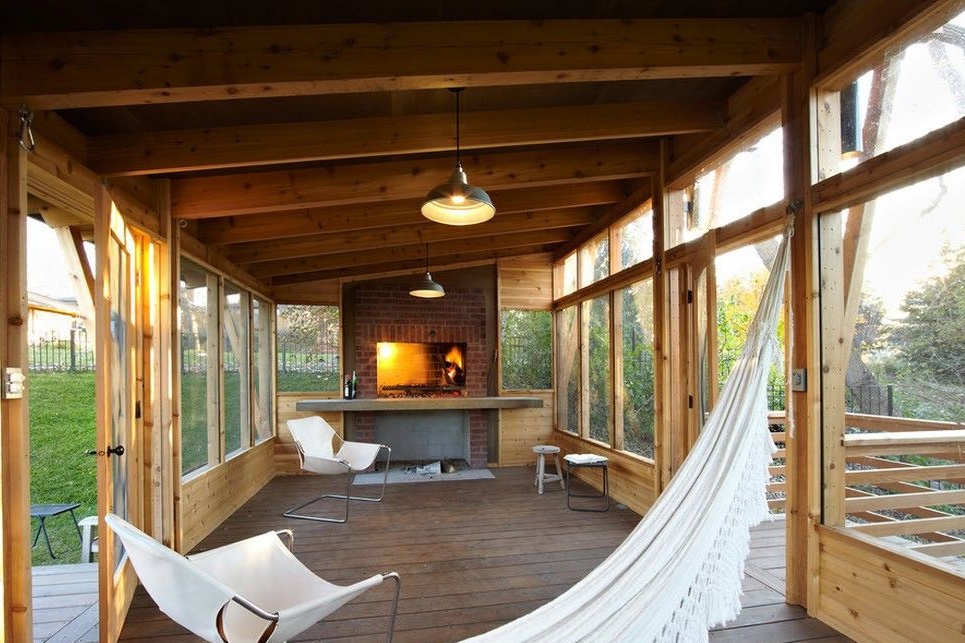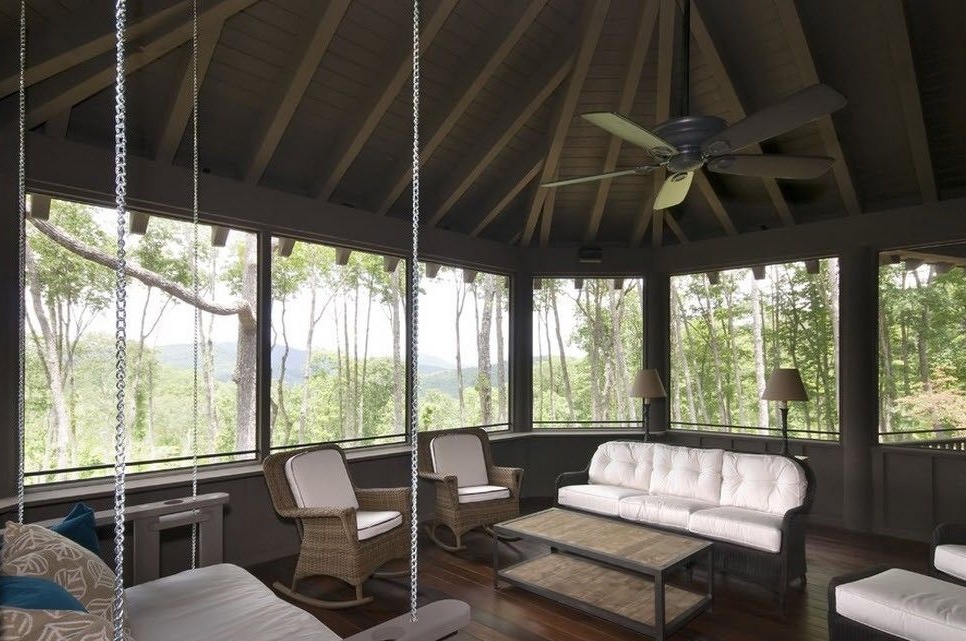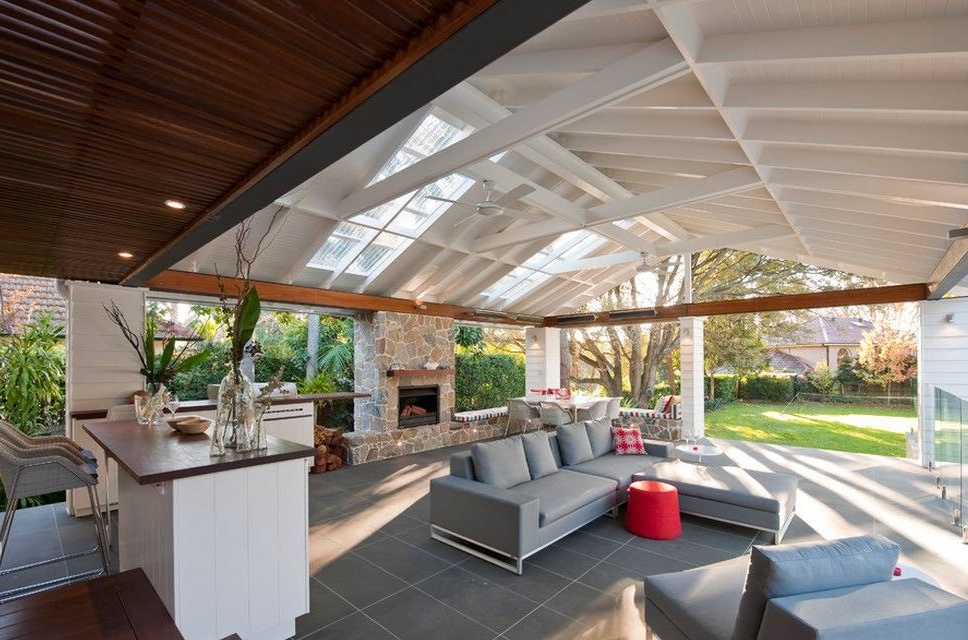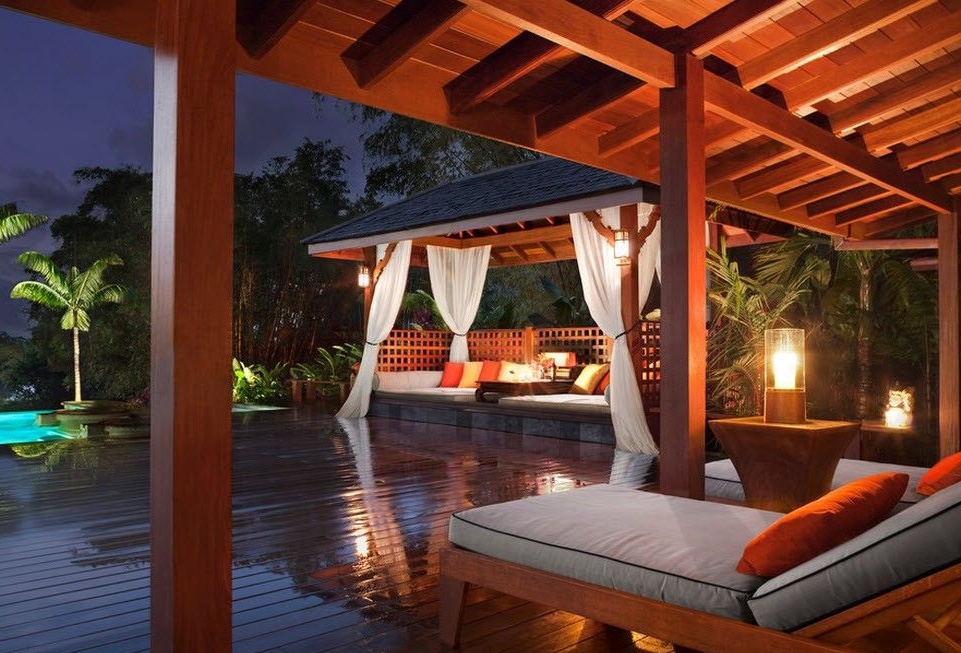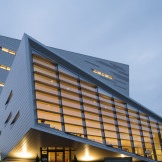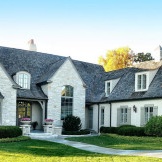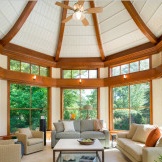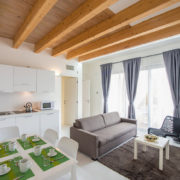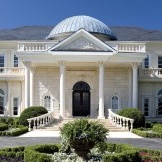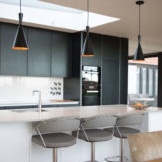Beautiful to live: your stationary arbor
The arbor drowned in bushes;
Fresh greens bright grid
On the walls half-rotten creeps
And through the greens in a colored window
Golden spring sun
Beats with multi-colored radiance.
In the twilight of corners - a web;
Jasmine branches burst through the door
Blinding the road and the light;
The whole round table is covered with verses,
All lined with monograms
And on it is a forgotten bouquet ...
Old-timers of suburban estates have long since positively decided for themselves the question of whether it is necessary to attach one more to the existing buildings - a gazebo - and thereby make their stay in the fresh air even more attractive and comfortable. They willingly share photos of their beauties on forums and social networks, give practical advice on construction and arrangement. New summer cottages, gardeners, gardeners, who have at their disposal a small piece of land or vast land, still have an exciting lesson to determine where exactly they will have the most comfortable and beautiful corner in which the gazebo will be the best decoration.
A lot of factors affect what the gazebo will be according to the temporary criterion of presence on the site: stationary (barbecue gazebo) and collapsible. If you live outside the city, or the property is provided with reliable protection (alas, these are our realities), or wonderful neighbors look after your property during your absence, then the question, of course, is decided in favor of a permanent building. It will be discussed.
Barbecue pavilion usually occupies a significant area, as it is designed to receive large companies
A characteristic feature of the barbecue pavilions is the division into cooking, dining and resting areas
The gazebo is an easy architectural structure to create a certain natural and cultural environment. It should correspond to its size and style of all buildings. Its direct purpose is to protect from rain and heat, to serve as a pleasant place for relaxation, romantic meetings, family gatherings, creative activity in between business chores. But for whatever purpose construction is started, its success will be determined by how harmoniously the building fits into the surrounding landscape, whether it will be a compositional unity with the house, fence, alleys, bridges, benches, a pond and flower beds - all the attributes of a cozy and beautiful landscape design.
Organic combination of elements of the composition -
arbor, fence, alleys, flower beds, shrubs and ampelous plants
The place of the gazebo near the artificial reservoir is one of the most successful solutions.
Recently, the definition of “monumental” is quite applicable to some types of arbors instead of “light construction”. And in this case we are not talking about a place for contemplation and solitude, but, on the contrary, about hosting a large company with the aim of entertaining and treating and ... captivating the imagination.
I wonder who first came up with the idea of a gazebo? Surely someone who during a walk in the open air was annoyed by the mercilessly scorching sun or, conversely, at the most inopportune moment, the rain began to rain. It is believed that the birthplace of light shelters from the vagaries of weather was Ancient Egypt. In the drawings found in the pyramids, archaeologists saw the familiar features of small architectural forms.Antiquity, embodied in noble marble, also left numerous monuments of such structures, which often served not so much for relaxation as for performing religious rituals. The Arab world with its luxury and leisurely erected intricate covered canopies, similar to air palaces. Western Europe, and after it Russia, in the parks of monarchs and noble estates, revived and enriched the construction technique. Southeast Asia, China and Japan have also contributed significantly to the diversity of images.
There are many classifications of styles of arbors that are somehow related to the artistic trends in architecture and design. One of the generally accepted is the linking of the appearance of the structure with its geographical origin:
- Classic (strict proportions and forms of Antiquity, Renaissance and Classicism are observed in it)
A gazebo, the roof of which rests on massive columns resembling ancient temples.
Located on an elevated part
allows you to enjoy the amazing panoramic view
- Oriental (Moorish, Egyptian, Persian, Indian, Chinese, Japanese)
- English (often called Victorian, with lots of trellises and climbing plants)
Strict lines of the gazebo with a fireplace in the English style
softened by beautifully picked flowering climbing plants
- Scandinavian (absolute integration into the surrounding nature, massive stone walls and a large number of wooden parts)
A gazebo made of large stone blocks,
has two wide entrances characteristic of the Norman house,
a lawn with a stone fragmentary path and a surface of water,
in which the sky is reflected - vivid features of the Scandinavian style
- In our latitudes, the rustic style (with thatched or reed roofs), rustic (rough designs of "clumsy" work), Italian (the abundance of gratings, ceramics and flowers - pergola, belvedere), as well as modern style (or fusion, the combination of styles at will) are popular. imagination and taste of the owners).
A place on the site was determined, a photograph was selected from the presented collection, or the desired image on paper was embodied by hand. Now is the time to start choosing materials, depending on which one of the following options of arbors will be built: stone, wooden, forged, glass (pavilion) or from innovative materials (polycarbonate).
When creating a stone barbecue gazebo, an inclined relief was successfully used,
which allowed us to include a wide staircase in the composition,
plant terraces, well and pond
Wooden multifaceted gazebo with a tent roof and a bridge with high rails leading to it.
evokes an association with Pushkin’s lines: “There is a Russian spirit ...”
Structurally, arbors differ in the presence (or absence) of solid walls:
- Open - represent a canopy on supports and are designed to relax in the warm season.
- Closed - a cross between a gazebo and a summer house, separated from the surrounding space by walls and a door on all sides, you can relax for almost the entire year.
The simple geometric shape of a wooden gazebo with glazed facades -
reliable shelter from wind and rain
Arbor of complex configuration with wide glazed windows,
which can be completely closed or closed depending on the weather,
allow you to spend a long time here
- Semi-closed - surrounded by three closed sides and have an open part of the facade for entry. You can stay in them from early spring to late autumn.
Spacious BBQ gazebo with island-style kitchen set
more like a summer house for permanent residence,
but the open part, serving as an entrance, recalls that in the image is just the arbor
The gazebo illuminated in the evening in the photo looks just great. But when installing the illumination system, care should be taken to protect yourself from the invasion of uninvited guests - mosquitoes, night butterflies and other insects.
A spacious wooden gazebo for relaxation will protect a large number of invited guests from the rain.
Protection from uninvited - nocturnal insects - will serve as a curtain of mesh fabric,
which at the same time can become an element of stylish drapery
Patterned Apricot Arbor
From apricot beams of rafters are cut down,
From the reed, the fragrant canopy is connected ...
Who knows if this is a cloud under the eave
Somewhere in the distance it will rain from heaven?
The presented images of the post about the design of stationary gazebos are provided with brief comments, to which you will definitely add your own when your dream and imagination, combined with financial capabilities, become a reality, and you can shoot the perfect creation of your hands (or hired professional performers) on camera after share photos with us and the whole world.

